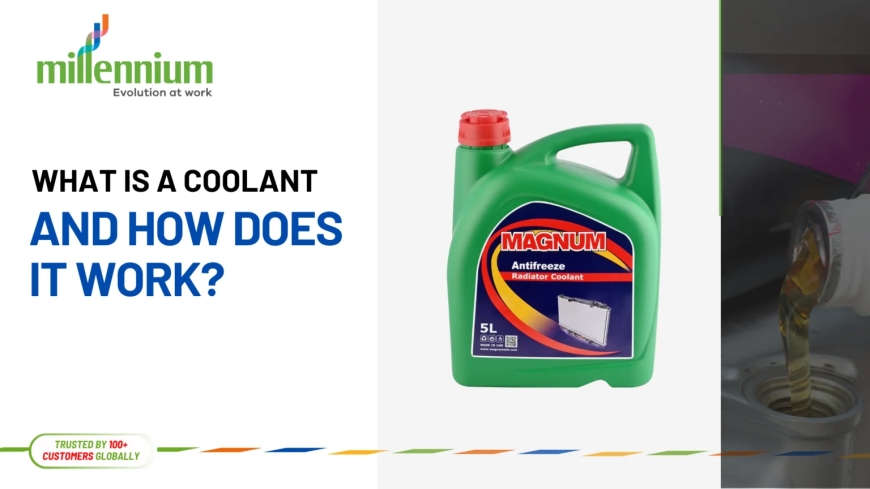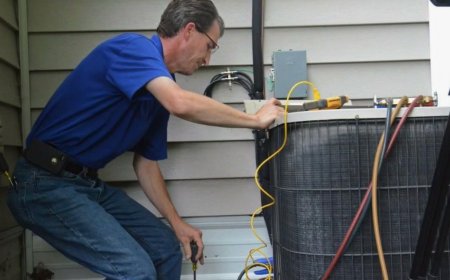What is a coolant and How Does it Work?
Engine coolant is one of the most critical but often overlooked fluids in a vehicle. Far more than just colored water, it is a sophisticated blend of chemicals designed to manage engine temperature, prevent freezing and boiling, and protect internal components from corrosion and wear.

Engine coolant, also known as antifreeze, is a specially formulated fluid used to regulate the temperature of an internal combustion engine. Its main purpose is to absorb the excess heat generated during engine operation and transfer it to the radiator, where it dissipates into the air. Without coolant, engines would quickly overheat, potentially causing severe damage like cracked blocks, blown head gaskets, or even total engine failure.
Coolant is typically a mixture of water and either ethylene glycol or propylene glycol, combined with corrosion inhibitors, dyes, and anti-foaming agents. It circulates continuously through the engine and cooling system, maintaining an optimal operating temperature. Beyond temperature control, coolant also prevents corrosion within the engine and keeps the internal components clean by minimizing scale and buildup.
Different Types of Coolant
Coolants come in several varieties, each suited to different engines and environmental conditions. Understanding the differences is key to choosing the right one for your vehicle or machinery.
1. Inorganic Additive Technology (IAT)
IAT coolant is usually green and was commonly used in older vehicles. It contains silicate and phosphate additives that protect the metal components in the engine. However, IAT coolants require frequent replacementtypically every two years or 30,000 milesbecause the additives degrade over time.
2. Organic Acid Technology (OAT)
OAT coolants are often orange, red, or dark green. These use organic acids instead of silicates to prevent corrosion. Designed for long-life applications, OAT coolant can last up to five years or 150,000 miles. It's commonly used in modern cars, especially from manufacturers like GM.
3. Hybrid Organic Acid Technology (HOAT)
HOAT coolant combines the benefits of both IAT and OAT. It includes silicates for fast-acting protection and organic acids for long-term performance. Colors vary from yellow to pink or turquoise, depending on the brand. HOAT coolant is often used in European and American vehicles and typically lasts about five years or 150,000 miles.
4. Phosphate-Free Coolants
Used primarily in Asian vehicles, these coolants are designed to protect aluminum engine components without relying on phosphates, which can form deposits in certain water conditions. Theyre usually based on OAT or HOAT chemistry and may appear in colors like blue, pink, or red.
5. Universal Coolants
Some coolants are marketed as universal, claiming to be compatible with multiple systems. These blends usually mix various additives to cover a broad range of applications, but they may not always meet manufacturer-specific requirements. Always check compatibility before using a universal coolant.
Characteristics of a Good Coolant
A high-quality coolant needs to do more than just transfer heat. It must perform reliably under various conditions while protecting the engine and extending its life. Here are the key attributes of an effective coolant:
1. Wide Operating Temperature Range
Good coolant should remain liquid under extreme cold and resist boiling under high heat. This allows it to provide protection across different climates and driving conditions.
2. Corrosion and Rust Inhibition
The metal surfaces inside an enginealuminum, iron, copperare susceptible to corrosion over time. A good coolant contains additives that form a protective layer on metal surfaces, preventing rust and electrolysis.
3. Thermal Conductivity
An effective coolant must quickly and efficiently transfer heat away from engine components. Poor thermal performance can lead to localized overheating and premature wear.
4. Low Toxicity (if required)
While ethylene glycol is effective, it is highly toxic. Propylene glycol, although less efficient at heat transfer, offers a safer alternative, especially in environments where leaks could pose a risk to people or animals.
5. Long Service Life
Coolants should maintain their chemical stability and effectiveness over time. Long-life formulas reduce the frequency of flushes and replacements, saving time and reducing environmental impact.
6. Compatibility with Materials
Coolant must be compatible with engine seals, hoses, gaskets, and other non-metallic components. The wrong formulation can degrade these parts, causing leaks and system failure.
7. Low Foaming
Foam can trap air, reducing a coolant's ability to transfer heat. A good coolant contains anti-foaming agents that ensure smooth, bubble-free circulation.
Conclusion
Engine coolant is one of the most critical but often overlooked fluids in a vehicle. Far more than just colored water, it is a sophisticated blend of chemicals designed to manage engine temperature, prevent freezing and boiling, and protect internal components from corrosion and wear. With multiple types availableeach tailored to different engines, driving conditions, and climateschoosing the right coolant is essential for reliable performance.
Using a high-quality coolant and following your manufacturers maintenance schedule helps ensure your engine runs efficiently and stays protected throughout its life. Regular inspections, timely flushes, and topping up with the correct formulation are simple steps that can prevent costly repairs. Whether youre operating a modern sedan, a heavy-duty truck, or industrial machinery, a well-maintained cooling system is key to optimal performance and engine longevity.



























